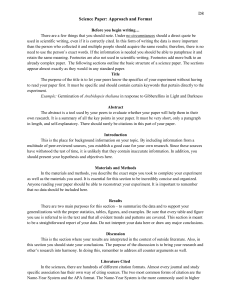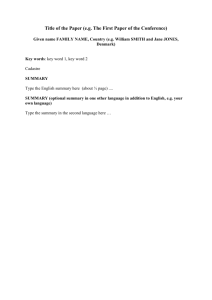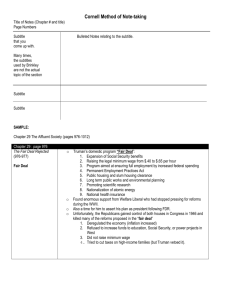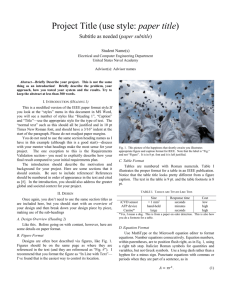Guidelines for authors
advertisement
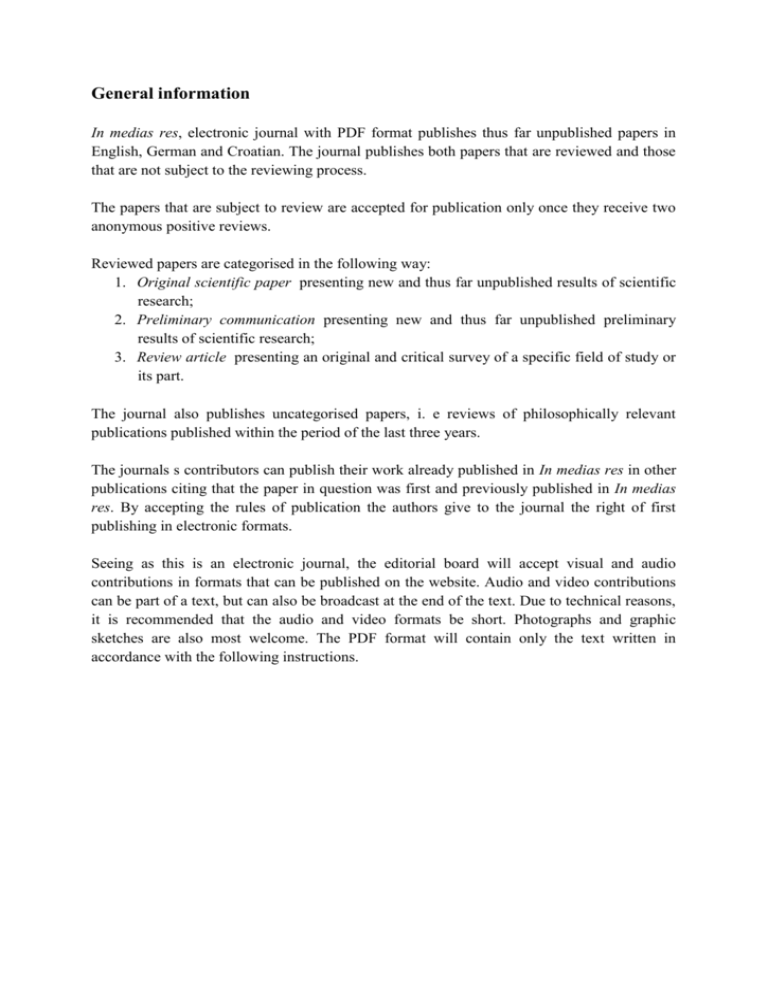
General information In medias res, electronic journal with PDF format publishes thus far unpublished papers in English, German and Croatian. The journal publishes both papers that are reviewed and those that are not subject to the reviewing process. The papers that are subject to review are accepted for publication only once they receive two anonymous positive reviews. Reviewed papers are categorised in the following way: 1. Original scientific paper presenting new and thus far unpublished results of scientific research; 2. Preliminary communication presenting new and thus far unpublished preliminary results of scientific research; 3. Review article presenting an original and critical survey of a specific field of study or its part. The journal also publishes uncategorised papers, i. e reviews of philosophically relevant publications published within the period of the last three years. The journals s contributors can publish their work already published in In medias res in other publications citing that the paper in question was first and previously published in In medias res. By accepting the rules of publication the authors give to the journal the right of first publishing in electronic formats. Seeing as this is an electronic journal, the editorial board will accept visual and audio contributions in formats that can be published on the website. Audio and video contributions can be part of a text, but can also be broadcast at the end of the text. Due to technical reasons, it is recommended that the audio and video formats be short. Photographs and graphic sketches are also most welcome. The PDF format will contain only the text written in accordance with the following instructions. Manuscript submission The desirable length of original scientific papers should range between 16 and 32 typewritten pages, of preliminary communications and review articles between 8 and 16, and of book reviews between 4 and 8 typewritten pages. A typewritten page contains 1 800 characters with spaces. The title of manuscripts should contain the following information: the name and the surname of the author the full name and address of the institution the author is presently employed at, the author s contact address (if different from the address of the institution), the author s e-mail address, the paper s full title (and subtitle if applicable), and an abstract of the paper (not longer than 900 characters with spaces) and key words (up to 10) on separate sheet of paper If the bibliographic details of the works quoted or referred to in the text are not inserted in the form of footnotes, authors are required to list all the cited literature containing all the necessary information about the same at the end of their papers. Manuscripts are to be sent either by e-mail (in the form of an attachment) in contact on web site www.centar-fm.org Referencing The editor s office recommends referencing by footnotes in a way that has been standard. The first reference to a work in a footnote should have the following form: [for books] John Rawls, A Theory of Justice, Harvard University Press, Cambridge (MA) 1971, p. 43. [for anthologies] Julie K. Ward (ed), Feminism and Ancient Philosophy, Routledge, New York – London 1996. [for journal articles] Hubert L. Dreyfus, „The Current Relevance of Merleau-Ponty s Phenomenology of Embodiment. Synthesis philosophica 19-20 (1-2/1995), pp. 3550. [for a paper from an anthology or a chapter from a book] James Rachels, „Ethical Theory and Bioethics“, in: Helga Kuhse & Peter Singer (eds.), A Companion to Bioethics, Blackwell, Malden (MA) – Oxford – Carlton (VI) 2004, pp. 15 – 23. [for e-literature] Arne Naess, „Is It a Plus to Have a Definite Metaphysics in Common“, http://trumpeter.athabascau.ca/content/v.22.1special/9definite_metaphysics.pdf Accessed on July 27, 2007. If the title and subtitle of a cited paper or book are not already separated by a punctuation mark, in citing them the two must be separated by a full stop and the first letter of the subtitle must be written in a capital letter. For example: Hans Jonas, The Phenomenon of Life. Toward a Philosophical Biology. Yi Jungquing, „The Laborious and Painful Process of Emancipation. A Survey of the Last Ten Years of Chinese Philosophy“. The footnote of an already and previously cited work should only contain the initial of the first name and the full surname of the author, the title of the work (book or article) cited and the relevant page numbers. For example: J. Rawls, A Theory of Justice, p. 120. H. L. Dreyfus, „The Current Relevance of Merleau-Ponty s Phenomenology of Embodiment“, p. 38. In consecutive referring to the same work, the footnotes are only to contain the word „Ibid“ and the relevant page numbers, as in the example below: Ibid., p. 112. The editor s office, naturally, accepts other standards of referencing provided that they are consistent throughout a text. The instructions are taken from the journal Philosophical Research, HRFD, Zagreb.

